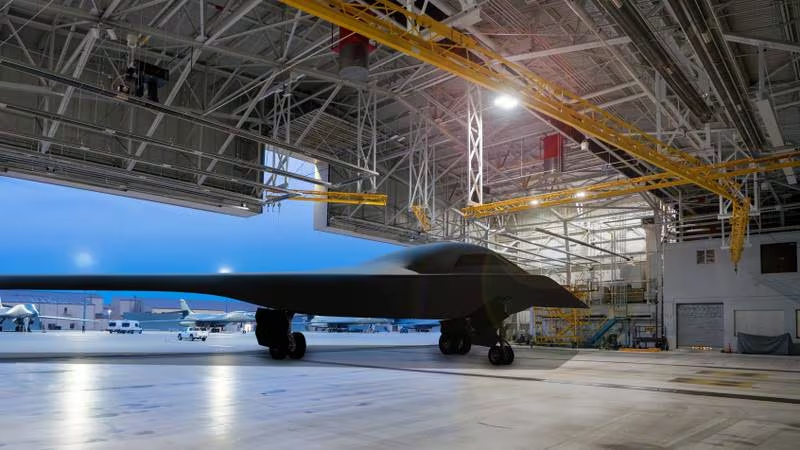
The B-21 Raider, America’s next-generation stealth bomber, is making waves as it sails through its test flight campaign.

The highly secretive program has seen successful flights, with Air Force acquisition chief Andrew Hunter confirming the smooth progression of the test objectives.

In a testimony before the Senate Committee on Armed Services, Hunter stated, “It is doing what flight test programs are designed to do…helping us learn about the unique characteristics of this platform but in a very, very effective way.”

The Raider made a significant rare update status on May 8, 2024, during the Senate hearing, reflecting the Air Force’s focus on the nuclear triad, which will include the B-21 and the Long-Range Stand-Off nuclear missile.

The Raider, a symbol of technological prowess, has benefited from advanced digital design tools that have been pivotal in early error detection and problem-solving within the design process.

This level of digitization is a first for an aircraft of this type. “This is the first aircraft where it is far more digital than not,” said Hunter, when probed on whether the B-21 could be considered the first fully digitally designed aircraft.

Northrop Grumman, the manufacturer, is equally proud of the B-21’s performance in initial testing, including ground tests of its engines, weapons bay doors, landing gear, and control services.

The effectiveness of the digital design, as Hunter informed Senator Mark Kelly, has been a key factor in the shorter timeline to get the B-21 airborne, thanks to mature software available upon the aircraft’s factory rollout.

The Raider’s test flights have been conducted out of Edwards Air Force Base in California, where it landed after its first flight from Air Force Plant 42 in Palmdale on November 10, 2023. Since then, the Air Force has kept details close to the chest, with only select sightings and videos providing glimpses of the bomber in action.

The most recent confirmed flight took place on January 17, 2024, and rumors of subsequent flights on March 28 and April 1, with another spotting on April 4, when it was caught in a video while flying at high altitude, escorted by a chase aircraft.

The stealth bomber, named “Cerberus,” has generated interest beyond its flight tests. Low-Rate Initial Production (LRIP) contracts have been awarded, with the Pentagon providing the green light for production, as reported by a spokesperson from Northrop Grumman.

The exact number of aircraft included in the LRIP and the contract’s value remains undisclosed, but the Air Force’s goal is to eventually field 100 B-21 Raiders, which will serve as the backbone of the Air Force’s bomber force in the 2030s.

The B-21’s companion in the nuclear triad, the Long Range Standoff (LRSO) weapon, has also been tracking well according to Hunter. This new nuclear missile, set to replace the AGM-86B Air-Launched Cruise Missile, will be employed by both the B-21 and the B-52 Stratofortress, further enhancing the Air Force’s strategic capabilities.

The unveiling of the B-21 has been anticipated with significant interest, owing to its advanced stealth, networking capabilities, and a keen eye towards affordability and maintainability.

Despite the cloak of secrecy, the available details paint a picture of a formidable addition to America’s defense, designed to adapt and outpace evolving threats.
Relevant articles:
– Flight Testing Of The B-21 Raider Stealth Bomber Is On Track, The Aviationist
– B-21 Raider Spotted During Test Flight, The Aviationist
– Northrop Grumman, Northrop Grumman
– 21 Raider stealth bomber in production, Pentagon says, Breaking Defense

